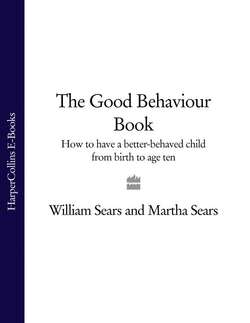Читать книгу The Good Behaviour Book: How to have a better-behaved child from birth to age ten - Martha Sears - Страница 27
the body chemistry of attachment
ОглавлениеGood things happen to the hormones of mothers and babies who are attached. Hormones regulate the body’s systems and help them react to the environment. One of these hormones is Cortisol. Produced by the adrenal glands, one of its jobsis to help a person cope with stress and make sudden adjustments in threatening situations. For the body to function optimally, it must have the right balance of Cortisol – too little and it shuts down, too much and it becomes distressed. Cortisol is one of the hormones that plays a major part in a person’s emotional responses. In reviewing attachment-chemistry studies, we conclude that a secure mother-infant attachment keeps the baby in hormonal balance. Insecurely attached infants may either get used to a low hormonal level, and so they become apathetic, or they may constantly have high stress hormones, and so they become chronically anxious. The securely attached infant seems to be in a state of hormonal well-being, and because the infant is used to that feeling, he strives to maintain it. Scientists are confirming what mothers have always known: Mother’s presence is important for keeping baby’s behavioural chemistry in balance.
Besides attachment parenting helping the baby’s hormones, it also helps the mother’s body chemistry. Maternal behaviours, especially breastfeeding, result in an outpouring of the hormones prolactin and oxytocin. These “mothering hormones” act as biological helpers, giving mums motherly feelings. They may, in fact, be the biological basis of the concept of mother’s intuition. Prolactin levels increase ten- to twenty-fold within thirty minutes after mother begins breastfeeding. Most of it is gone again within an hour. Prolactin is a short-acting substance, so to get the best response a mother must breastfeed frequently – which is what babies want anyway. Hormones are biological helpers that improve the behaviour of the baby and the caregiving of the mother. Your choice in parenting style can make them work for you.
“But won’t prolonged breastfeeding spoil a toddler? He needs to become independent.” Actually the reverse is true – children who are not weaned before their time are more independent. Premature weaning breaks a connection before the child is equipped to make other connections. Extended nursing, rather than encouraging a child to stay dependent, creates conditions that encourage independence. Offering a familiar connection (breastfeeding) during tumultuous toddlerhood gives the child an anchor from which he can explore the unfamiliar.
The idea of breastfeeding past your child’s first birthday may seem strange to you, but we believe that it is important that children not be weaned before they show signs of readiness. Weaning is a part of growing up. It should take place gradually. We have noticed that children who have been weaned too early show what we call diseases of premature weaning: aggression, anger, more tantrum-like behaviour, anxious clinging to caregivers, and less ability to form deep and intimate relationships. Breastfeeding seems to mellow out the aggressive tendencies of toddlers and restores balance in their behaviour. In 1990, former surgeon general Dr Antonia Novello, after extolling the benefits of breastfeeding, added, “It’s the lucky baby, I feel, who continues to nurse until he is two.” (See “Weaning from Attachment”.)
Can a bottle-feeding mother achieve the same degree of closeness with her baby as the breastfeeding mother?
We believe she can, but she has to work at it harder since she is not part of a natural feedback loop enjoyed by the breastfeeding baby and mother. The bottle-feeding mother is more likely to schedule her baby’s feedings, because formula-fed babies are easier to schedule (artificial baby milks take longer to digest). Bottle-feeders tend to worry more about spoiling their babies. A bottle-feeding mother does not have the benefit of the hormonal boost that happens with breastfeeding or the intimate skin-to-skin connection. Holding her baby lovingly in the breastfeeding position, caressing her baby during feeding, and giving a nurturing response to cries can stimulate her mothering hormones, yet the effects are not as great as with breastfeeding. By carrying her baby a lot, responding to her baby’s cries, and making feeding time a nurturing interaction, a bottle-feeding mother can achieve a level of sensitivity and knowledge of her baby closer to what comes with breastfeeding than if she didn’t add these attachment boosters. We realize there are mothers who would be deeply unhappy breastfeeding. It’s important for a mother to choose a method of feeding that reflects a happy mother to her baby. Perhaps as inner conflicts are explored she’ll want to breastfeed her next baby.
